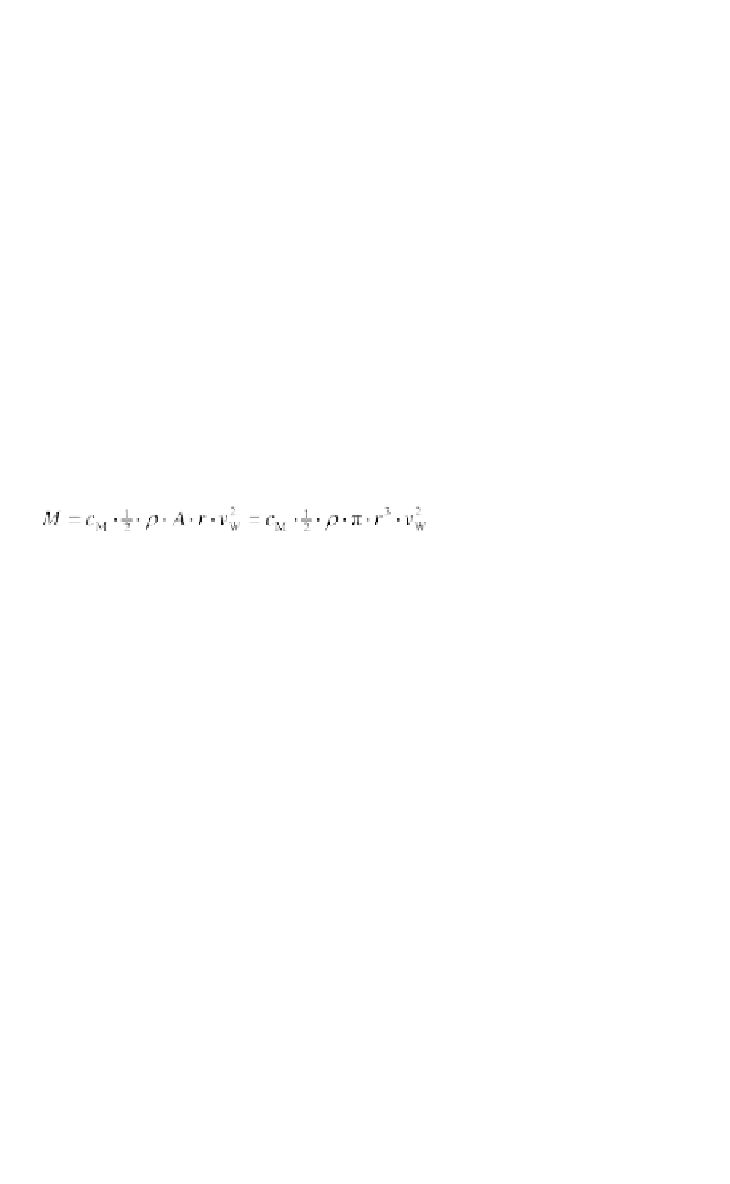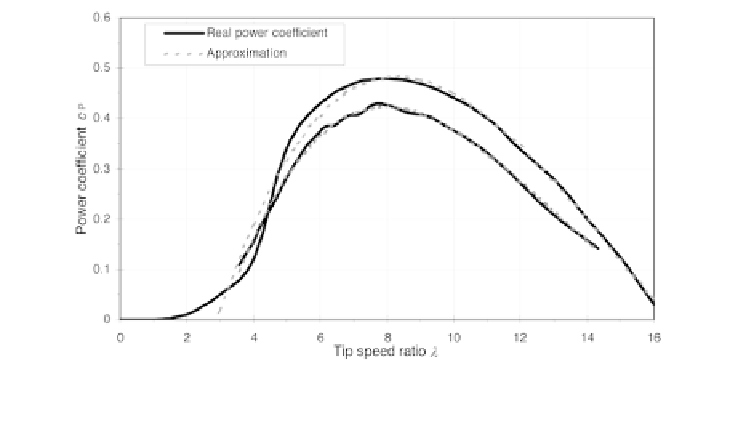Environmental Engineering Reference
In-Depth Information
Figure 5.10
Power Coefficients and Approximations using
Third-degree Polynomials
and
A
=
π
r
2
, can be also described as follows:
(5.44)
If the torque
M
or power
P
of a wind generator as a function of the wind
speed
v
W
is known, the power coefficient at constant speed can be calculated.
Figure 5.9 shows the characteristics of the power coefficient and the tip speed
Table 5.6
Parameters for the Description of the Power Coefficient Curves in
Figure 5.10
a
3
a
2
a
1
a
0
Curve 1
0.00094
-0.0353
0.3841
-0.8714
Curve 2
0.00068
-0.0297
0.3531
-0.7905
Note:
Curve 1 = lower curve; curve 2 = upper curve
ratio of a 600-kW wind generator. The maximum power coefficient of 0.427
is much closer to the Betz power coefficient than that achieved by a drag device
(see section on power content of wind, p188).
The calculation of the power coefficient curve is very difficult and is only
possible when considering complex aerodynamic conditions along the rotor
blades. Therefore, the dependence of the power coefficient on the tip speed
ratio is usually estimated by measurement. A third-degree polynomial can
approximately describe the curve of the power coefficient:
(5.45)




